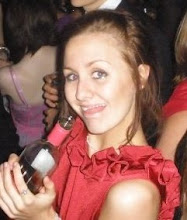Exhibition @ the National Portrait Gallery, St Martin’s Place, London, 18th June – 20th September

After picking up one of those ‘What’s on: Guide’ type supplements I decided to visit the BP Portrait Awards Exhibition at the National Portrait Gallery, London. An annual and prestigious competition, I learnt that the BP Portrait Awards sees thousands of entrants from all around the world put forward their accomplishment in contemporary portraiture work. This year, 2009 saw 1, 901 entries, a record number in the history of the event, and from there the winners were chosen and the remainder whittled down to 56 paintings to be showcased in the exhibition.
Here are the portraits that won first, second and third prizes:

First prize awarded to Pete Monkman for his work Changeling 2 which contains a series of portraits of his daughter at different stages of her life, exploring the concept of childhood.

Second prize awarded to Michael Gaskell for his work Tom, a portrait of Gaskell’s 17 year old son.

Third prize awarded to Annalisa Avancini for Manuel, a portrait of 31 year old Manuel, in her aim to catch his story and personality through his face.
Upon arrival I was intrigued to be amongst works submitted from members of the public with varied backgrounds and training in the arts, in what felt like a sort of an extremely high quality talent show, one in which every piece was worthy of a prize. The variety between portraits was of interest, in subject and in style. Featured were the young and old alike, a Lord, a fisherman, a football fan, as well as subjects from different ethnic and cultural backgrounds. However what really drew me in was being able to relate to the relationships between the subject and the artist, and pondering on the complex characters laid out in front of me. Which family member is featured, what are they doing, what mood are they in, what sort of personality do they have. Similarly here as when looking at the book 'Two Faced', it is the relationships between the sitter and the artist that have created such interesting portraits, and the intimacy that can therefore be conveyed within.

One of my favourites was this piece, Madeleine, by Jane Cooper. The way she has captured the light falling across the little girl. The juxtaposition of the furry headband symbolising fun and playfulness, against the pose, which suggests a certain fragility and seriousness making her old beyond her years.
The exhibition has quite an old-fashioned feel to it, in the exploration of portraiture in a fairly traditional sense without much pushing of boundaries. Much of the work is photorealistic, with only a few exceptions of more naïve and abstract representations. In fact there are perhaps a few too many photorealistic portraits, despite the extremely obvious high level of skill and incredible realism. Overall however, the exhibition exudes energy and features an impressive range of portraits full of emotion, and committed to high quality figurative painting.




































